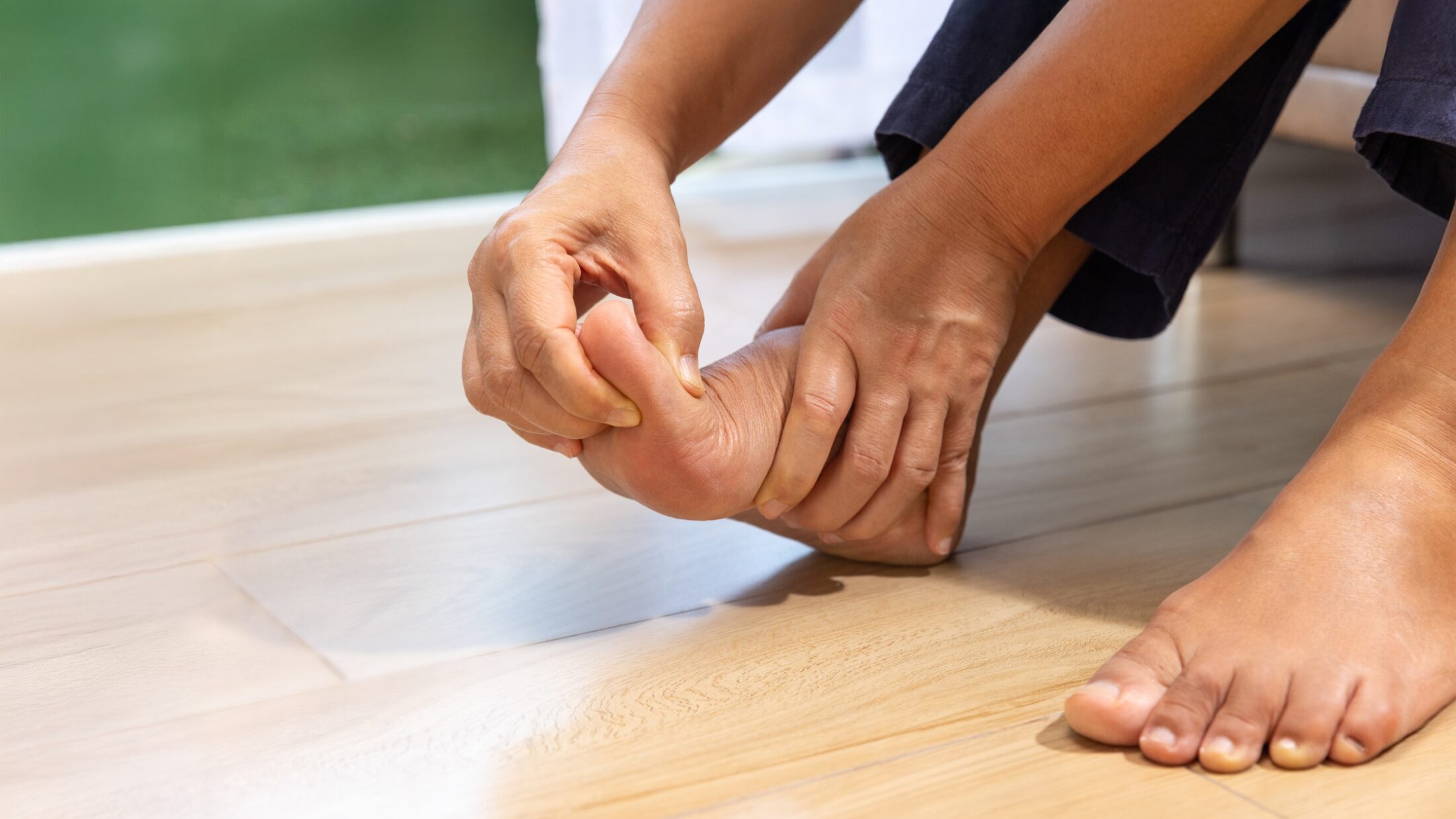Gradient compression socks are a specialized type of compression wear designed to improve blood circulation and reduce swelling in the legs. Unlike standard compression socks, gradient compression socks provide pressure that is highest at the ankle and gradually decreases up the leg. This unique design supports natural blood flow back to the heart, making them an effective solution for managing conditions like edema and swelling.
Edema, characterized by fluid retention and swelling in the lower extremities, can result from prolonged sitting or standing, pregnancy, or underlying health conditions. Left untreated, it can lead to discomfort, limited mobility, and even more serious complications. Gradient compression socks play a vital role in reducing these symptoms by helping to prevent fluid buildup and supporting better circulation.
Gradient Compression and How It Works
Gradient compression refers to a specialized form of compression therapy where pressure is applied to the legs in a graduated manner, decreasing progressively from the ankle up toward the thigh. This design mirrors the natural flow of blood, encouraging efficient circulation and helping to prevent fluid buildup in the lower extremities.
The key to gradient compression lies in its graduated pressure levels. The highest compression is concentrated at the ankle, where blood needs the most assistance to return to the heart. The pressure then gradually reduces as the sock or stocking extends up the leg. This graduated effect helps combat the effects of gravity, which can cause blood and fluid to pool in the lower extremities, leading to swelling and discomfort.
For example:
- Ankle: Provides the firmest pressure to counteract pooling.
- Calf: Pressure begins to ease but still supports upward blood flow.
- Thigh: Minimal compression ensures comfort while maintaining circulation.
Benefits for Circulation and Fluid Management
Gradient compression is a proven, non-invasive method to manage swelling and circulation issues effectively. Its ability to provide targeted pressure makes it a preferred choice for people dealing with edema and those seeking to maintain optimal leg health.
- Promotes Healthy Circulation:
- Enhances blood flow, ensuring oxygen and nutrients are efficiently delivered to tissues.
- Reduces the risk of venous conditions like varicose veins and deep vein thrombosis (DVT).
- Prevents Fluid Retention:
- Encourages lymphatic drainage, reducing swelling caused by edema.
- Helps manage conditions like lymphedema and post-surgical swelling.
- Alleviates Discomfort:
- Reduces leg fatigue and heaviness, improving comfort during prolonged standing or sitting.
- Relieves achiness and throbbing caused by poor circulation.
- Supports Recovery:
- Assists athletes and active individuals by speeding recovery after strenuous activity.
- Aids in post-surgical rehabilitation by minimizing swelling.
How Gradient Compression Supports Fluid Balance in the Legs
Gradient compression socks are highly effective in managing edema and swelling by improving circulation, reducing fluid buildup, and alleviating discomfort. Whether you’re managing chronic swelling or looking to prevent future complications, gradient compression socks offer a practical and effective solution for maintaining leg health and comfort.
Enhanced Blood Circulation
The graduated pressure design of gradient compression socks ensures that the highest level of compression is applied at the ankle, gradually lessening as the sock moves up the leg. This promotes efficient upward blood flow, combating the effects of gravity and reducing the risk of blood pooling. By encouraging circulation, these socks help prevent clot formation and reduce the likelihood of developing varicose veins.
Reduced Swelling
Swelling, or edema, often results from fluid accumulation in the lower extremities due to poor circulation or lymphatic drainage. Gradient compression socks actively prevent fluid from collecting in the legs by applying consistent pressure. This helps to minimize swelling, whether caused by prolonged sitting or standing, pregnancy, or underlying medical conditions.
Alleviated Discomfort
One of the most immediate benefits of wearing gradient compression socks is relief from the discomfort associated with edema. Many users report significant reductions in heaviness, aching, and fatigue in their legs after regular use. This can lead to increased mobility and an overall improvement in daily comfort, making these socks a valuable tool for anyone experiencing swelling.
Prevention of Venous Disorders
Regular use of gradient compression socks can also prevent more serious venous conditions, such as deep vein thrombosis (DVT) and chronic venous insufficiency. By maintaining healthy blood flow and reducing pressure on the veins, these socks help protect against complications that may arise from untreated circulation issues.
Features to Consider When Choosing Gradient Compression Socks
Choosing the right gradient compression socks is essential for achieving optimal results in managing edema and swelling.
Compression Levels
Gradient compression socks are available in various compression levels, measured in millimeters of mercury (mmHg).
- Mild (8-15 mmHg): Ideal for daily wear, mild swelling, and light leg fatigue. These are suitable for general use and preventive care.
- Moderate (15-20 mmHg): Best for managing moderate edema, varicose veins, and discomfort from prolonged standing or sitting.
- Firm (20-30 mmHg): Recommended for significant swelling, chronic venous insufficiency, or recovery from surgery. This level provides the strongest therapeutic benefits.
Material Quality
The fabric of compression socks plays a significant role in comfort and durability.
- Breathable: Allows air circulation to keep legs cool and dry.
- Moisture-wicking: Prevents sweat buildup, reducing the risk of irritation or odor.
- Elastic and Durable: Ensures the socks retain their compression level over time without stretching out.
Proper Fit
Accurate sizing is critical for effectiveness and comfort. Compression socks must fit snugly without being too tight or restrictive. A well-fitted sock will apply consistent pressure without causing discomfort.
- Measure the circumference of your ankle, calf, and, if applicable, thigh.
- Measure the length from your heel to the desired sock height (knee or thigh).
Style and Length
Gradient compression socks come in various styles to suit different needs:
- Knee-high: Suitable for most cases of edema and swelling, focusing on the lower legs.
- Thigh-high: Provides additional support for upper leg circulation and more severe conditions.
- Full-length (Pantyhose): Ideal for individuals needing comprehensive support, including pregnant women or those with circulation issues extending beyond the thighs.
Who Can Benefit from Gradient Compression?
Gradient compression socks are a versatile solution for anyone looking to improve circulation, reduce swelling, or prevent venous complications. Whether you’re managing a medical condition, seeking enhanced performance, or simply aiming for better leg health, these socks can make a significant difference in your daily life.
Individuals with Edema
People experiencing swelling in the lower extremities due to fluid retention can find relief with gradient compression socks. Whether caused by prolonged standing, sitting, or certain medical conditions, these socks help reduce swelling and improve comfort throughout the day.
Pregnant People
Pregnancy often leads to increased pressure on the veins and swelling in the legs. Gradient compression socks alleviate discomfort by promoting better circulation, reducing swelling, and helping prevent the development of varicose veins during pregnancy.
Athletes
Athletes use gradient compression socks to enhance performance and support muscle recovery. By improving blood flow, these socks reduce muscle fatigue, minimize soreness, and speed up recovery after intense workouts or competitions.
Frequent Travellers
Long flights or extended periods of sitting in cars can lead to swelling and discomfort, commonly known as “economy class syndrome.” Gradient compression socks help prevent these issues by encouraging blood flow and reducing the risk of deep vein thrombosis (DVT).
Individuals with Venous Disorders
Those with conditions such as varicose veins, chronic venous insufficiency, or post-thrombotic syndrome benefit greatly from the graduated pressure these socks provide. They help reduce symptoms like swelling, pain, and heaviness in the legs, while supporting vein health.
How to Choose Gradient Compression Socks
Selecting the right gradient compression socks is essential to ensure comfort, effectiveness, and proper support. Before purchasing compression socks, consult a healthcare provider or specialist to determine the appropriate compression level and style for your specific condition. Professional guidance ensures you receive the correct level of support to manage symptoms effectively.
Get Accurate Measurements
Proper fit is critical for the effectiveness of gradient compression socks. Measure your legs in the morning when swelling is minimal to ensure accurate sizing. Key measurements include:
- Circumference of the ankle, calf, and, if necessary, thigh
- Length from your heel to the desired sock height (knee-high, thigh-high, etc.)
Consider Your Lifestyle
Choose socks that align with your daily activities and personal preferences. For example:
- Active Individuals: Opt for durable, breathable fabrics suitable for sports or long days on your feet.
- Travellers: Look for lightweight options for extended wear during flights or car rides.
- Everyday Use: Select socks that blend seamlessly with your wardrobe for discreet comfort.
Start Gradually
If you’re new to compression wear, start with a lower compression level (e.g., 8-15 mmHg) to allow your legs to adjust. Gradually increase to higher levels (e.g., 15-20 mmHg or 20-30 mmHg) as advised by a healthcare provider to avoid discomfort.
Wearing Gradient Compression Socks to Support Long-Term Leg Health
Gradient compression socks offer a practical and effective solution for managing swelling, improving circulation, and preventing venous disorders. By applying graduated pressure, these socks help alleviate discomfort, reduce edema, and support better blood flow, making them an essential tool for anyone experiencing leg fatigue or swelling.
Whether you’re dealing with edema, travelling frequently, staying active, or managing a medical condition, gradient compression socks can provide the support and relief you need. With options tailored to various lifestyles and needs, they are a versatile choice for improving overall leg health.
Ready to find the perfect fit? Consult with a healthcare specialist for personalized recommendations, or explore the high-quality compression sock options available at Care-Med.ca. Schedule your fitting today and take the first step toward healthier, more comfortable legs,
Share This Story, Choose Your Platform!
Table of Contents
- Relieve Swelling with Gradient Compression Socks
- Gradient Compression and How It Works
- How Gradient Compression Supports Fluid Balance in the Legs
- Features to Consider When Choosing Gradient Compression Socks
- Who Can Benefit from Gradient Compression?
- How to Choose Gradient Compression Socks
- Wearing Gradient Compression Socks to Support Long-Term Leg Health
We specialize in orthotics, body braces, and compression wear tailored to your unique needs in Toronto. Reach out to us at info@caremed.care or call 416-782-5353 to book your fitting and consultation.
Experience the difference of customized solutions designed just for you.











